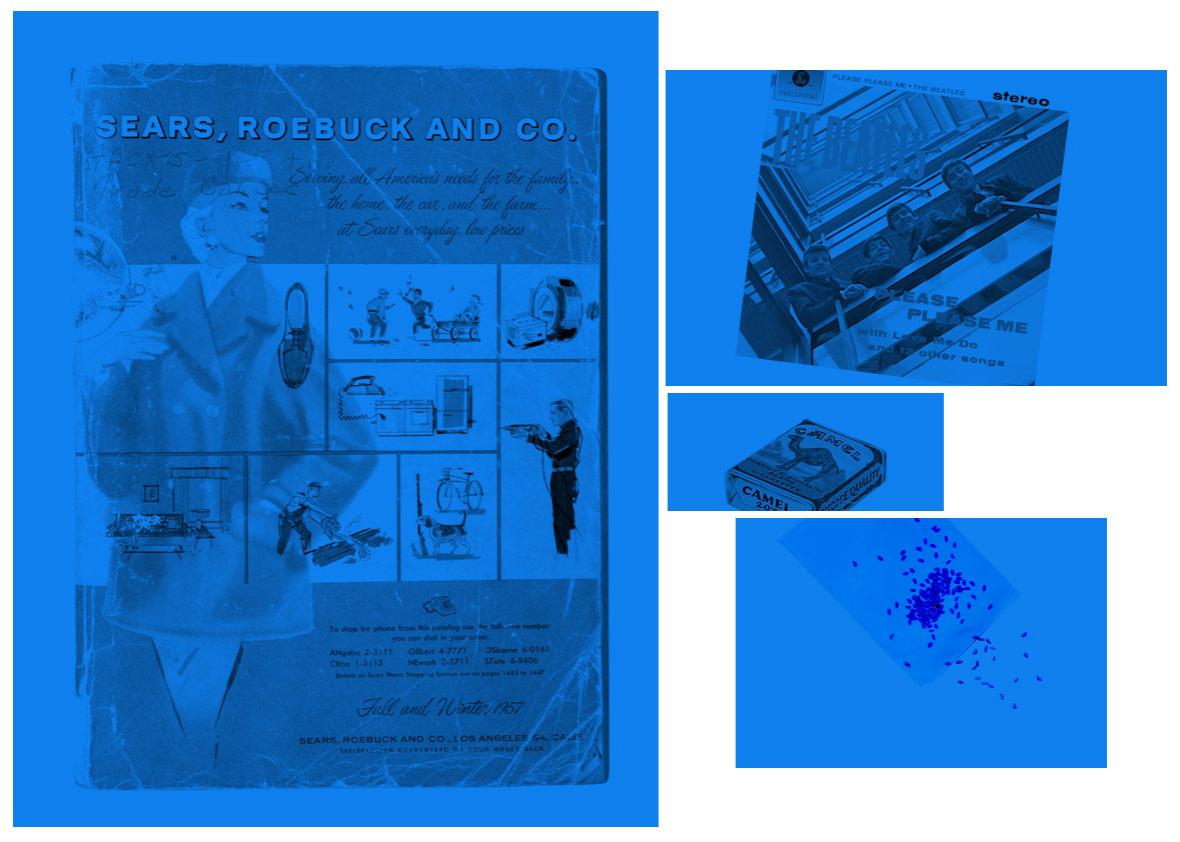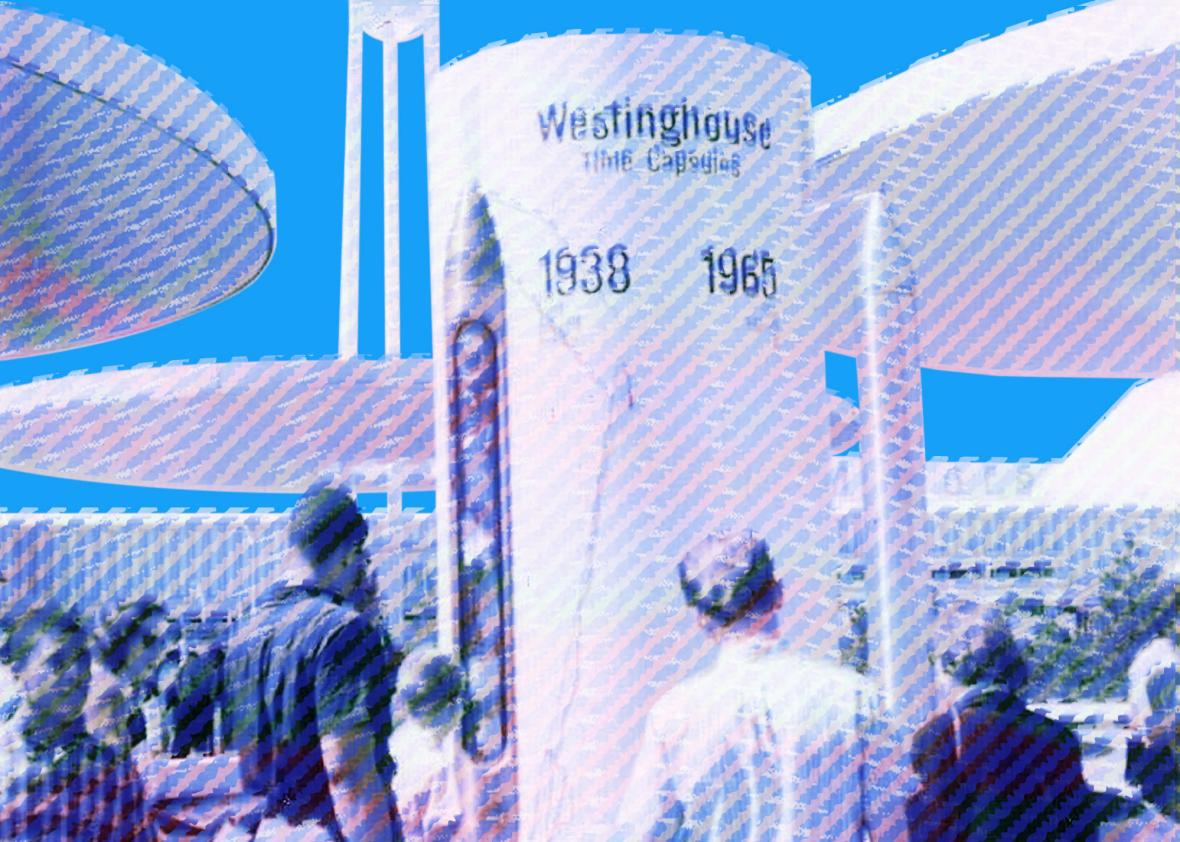The time capsule is a concept perfectly pitched to an elementary school student’s sense of wonder. I loved them as a kid—thinking about them, reading about them, burying toys and little messages in bottles in our backyard. Now that I’m older, though, the whole idea reeks of a particularly American self-centeredness in relationship to the passage of time. “Time capsules are both optimistic and selfish,” writer Matt Novak told Mental Floss, “in the sense that they represent a belief that not only will anyone find them sometime in the future, but also that anyone will care about what’s inside.”
Over the 19th and 20th centuries, American time capsules went from containers for civic virtue, to carefully curated museums of popular culture, to catch-alls, capturing the overwhelming amount of stuff that drifts through a consumer society. Looking at the evolution of time capsule contents, it becomes clear that our ideas about which items future historians could use in order to figure out how we lived have changed drastically. But through it all, we’ve retained a touching faith in our own interestingness.

Photo illustration by Natalie Matthews-Ramo. Photos by Thinkstock.
The first recorded effort to bury a true time capsule in America took place at the 1876 Centennial Exposition in Philadelphia, spearheaded by a Civil War widow named Anna Diehm. While working as the publisher of the weekly Our Second Century, Diehm had the idea for the so-called Century Safe and executed it at her own expense. Diehm’s vision for what should go into the fireproof safe, to be opened a hundred years later, came straight out of the 19th-century interest in social structure, hierarchy, and worthy citizenship. The Century Safe contained photograph and autograph albums with the images and signatures of what the newspaper called “the most eminent men” who were alive in 1876. Though Victorians loved an autograph album, the people who opened the capsule in 1976 might have been forgiven for finding themselves less than thrilled. Another, more interesting capsule in this genre, the 1900 Detroit Time Capsule (opened in 2000), contained letters from prominent citizens describing the present state of life in Detroit and offering predictions as to its future, along with photos of businessmen, business cards, and rosters of organizations such as the Merchants and Manufacturers Exchange.
By the middle of the 20th century, the American concept of items that were important to send forward into the future had shifted from the prestigious to the everyday. The time capsule buried in Queens during the 1939 World’s Fair heralded the change. As one time capsule expert, Knute Berger, told the New York Times in 1989, the 1939 capsule buried by the Westinghouse Electric Company was an attempt “to do what we wish other civilizations had done—manufacture an archaeological find.” Rather than picking through garbage dumps and piecing together pot shards, the theory went, the diggers of the future could happen upon a midcentury time capsule and find everything they needed in one place. This notion appealed to a certain type of midcentury mindset that perceived the workings of modern industrial America as fascinating and wonderful. Americans could bring electricity to rural areas, cure terrifying diseases, and build highways; why not also gift future historians with the perfect representation of their world?
Following this ambitious ideal, the two midcentury Westinghouse World’s Fair capsules contain Camel cigarettes and a Sears catalog (1939), and an electric toothbrush and a Beatles album (1965), alongside representative bits of modern technology. A very large capsule from 1940, the Crypt of Civilization at Oglethorpe University, holds dentures, wigs, plastic savings banks, Lincoln Logs, and a package of Butterick dress patterns, along with recorded views of cities; seeds of flowers, trees, and vegetables; and “an apparatus for teaching the English language in case it is no longer spoken.” (Which it might not be: This capsule is supposed to be opened in 8,000 years.)

Photo illustration by Natalie Matthews-Ramo. Photos by Thinkstock, Camel, The Beatles, Sears Roebuck and Co./Annie Wells/Los Angeles Times via Getty Images.
Other, more modestly inclined midcentury capsule assemblers put some humor into it. A time capsule buried by the American Legion in Centralia, Pennsylvania, in 1966 contained a pair of ladies’ bloomers, size large, donated by a resident. (“I remember him joking about these being his wife’s, and she promptly smacked him in the head,” a surviving Legionnaire recalled when the town opened the capsule.) That time capsule’s opening was extremely bittersweet—the town of Centralia was largely abandoned a few years after the capsule was buried, because of an ongoing underground fire in a nearby mine, and the capsule itself was mostly ruined when an apparent souvenir-seeker tried to break into it and it flooded with water—but the appearance of those bloomers in the unboxing process leavened the occasion.
The 1970s saw the dawn of the junk capsule. Andy Warhol stuffed 600 boxes with random crap from his daily life, calling them “time capsules” and thinking that he would eventually auction them off unopened. The capsules are now at Pittsburgh’s Warhol Museum, which has created a series of videos showing archivists unboxing them. Warhol’s flotsam and jetsam—Altoids tins (once used for Quaaludes), drink umbrellas, blank stationery, a piggy bank, used condoms, John Cale’s passport, magazines—is Warhol’s commentary on his own mortality, but also a joyful meditation on the object-cluttered state of contemporary life. The project is a sunnier take on Philip K. Dick’s concept of “kipple”—the useless stuff that accumulates, entropically, in the corners of every room in a consumer society.

Photo illustration by Natalie Matthews-Ramo. Photos by CocaCola, Jim Beam, Altoids and Thinkstock.
But the trash capsule, as I think of it, wasn’t just a high-art idea. In Great Bend, Kansas, in 1972, organizers asked townspeople to bring items to throw into a capsule, and they tossed in random things from their pockets. “It was a minor scandal in the town that people didn’t prepare more by bringing things that had some value (sentimental or otherwise) to the burial,” Matt Novak wrote, but the end result was probably a pretty good picture of daily life in Kansas in the early ’70s. A Dodge City, Kansas, time capsule from 1972 had empty Pepsi-Cola, Jim Beam, and Coors bottles in it, along with more traditional capsule standbys. And who’s to say that these kinds of pieces of “trash” wouldn’t be just as valuable to a future archaeologist as the carefully selected Westinghouse pack of Camels?
Not everyone has given up on the idea of stuffing time capsules with traditionally historically significant things. The Martin Luther King Jr. Time Capsule (buried in 1988, scheduled to be opened in 2088) contains some of King’s possessions, as well as letters from his descendants reflecting on his legacy. The National Millennium Time Capsule in Washington (buried in 2000, scheduled to be opened in 2100) features such Smithsonian-worthy objects as a piece of the Berlin Wall, a helmet from World War II, and Louis Armstrong’s trumpet in it.
But as we’ve moved forward in time, our idea of what’s important about our culture has morphed. Now we see even trash as a message to the future. Wonder how that will reflect back on us.
This article is part of Future Tense, a collaboration among Arizona State University,New America, and Slate. Future Tense explores the ways emerging technologies affect society, policy, and culture. To read more, follow us on Twitter and sign up for our weekly newsletter.
